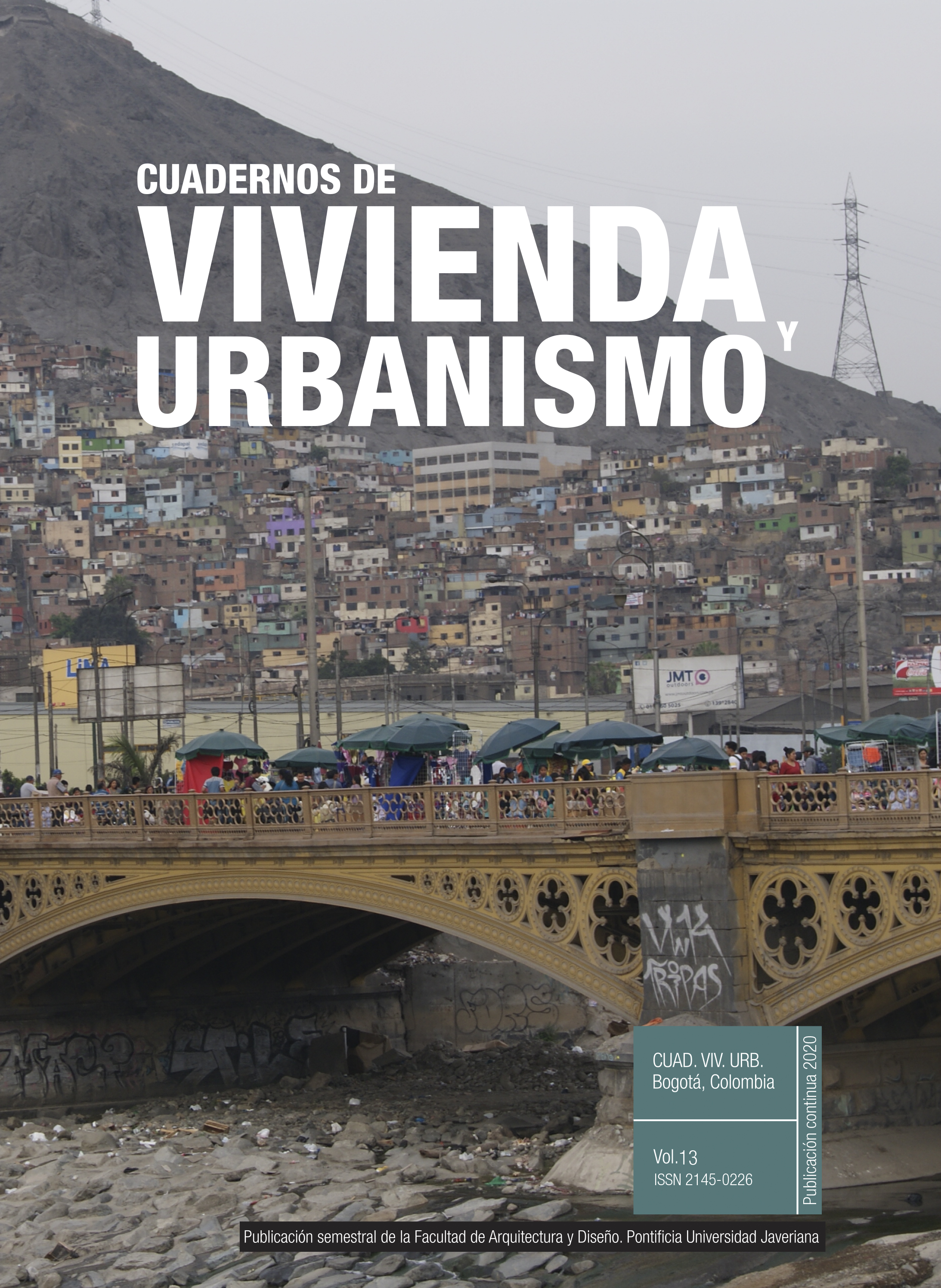Resumen
Mat-building (edificio estera) es el término que acuñó Alison Smithson para designar cierto tipo de edificios con capacidad de transformación en el tiempo, para otorgar mayores libertades a los individuos. El mat-building nos conduce a otro tipo de arquitectura que se aleja de lo formal —el objeto terminado—, para evidenciar una disposición adaptable a maneras de habitar variable.
La variabilidad del sistema se presta para albergar la vida cambiante de los seres humanos, es decir, para la vivienda. El mat representa hoy día una de las posibilidades más grandes por desarrollar en plena forma la vivienda contemporánea, pues permite la adaptación de las ciudades y su población en diferentes ámbitos y escalas. Al final del texto, a manera de conclusión, se presenta un ejemplo de aplicación, el sistema CAH, ganador del concurso BCN-NYC Affordable Housing Challenge para vivienda asequible en Barcelona y Nueva York.
Brau Pani, G. (2016). How to analyze and evaluate Mat-Housing. Arquilecturas
CAH, Constructions System for Affordable Housing. (2019). https://cahsystem.wixsite.com/home
Castellanos, R., Gómez, R., Domingo, D., y Torres, J. (2011). Del mat-building a la ciudad en el espacio. Boletín Académico. Revista de investigación y arquitectura contemporánea, 1, 54-62.
Colmenares, S. (2017). The Plan of Equivalents. Mat-Rooming. VLC Arquitectura, 4(2), 55-85.
Cook, P. (1999). Archigram. Princetian Architectural Press.
Falagán, D. (2016). Mat-building en el Laboratorio. Arquilecturas.
Hyde, T (2001). How to Construct an Architectural Genealogy. En H. Sarkis, P. Allard y T. Hyde (eds.), Le Corbusier’s Venice Hospital and
the Mat-building Revival (pp. 104-117). Prestel.
Koolhaas, R. (1978). Delirious New York. Monacell Press.
Leoz de la Fuente, R. (1969). Redes y ritmos espaciales. Blume.
Martí, C., y Bardí i Milà, B. (2011). Antecedentes históricos del mat-building: cinco ejemplos. DPA: Documents de Projectes d’Arquitectura, 27- 28, 132-141.
Morin, E. (2011). Introducción al pensamiento complejo. Gedisa.
Muro, C. (2011). Siguiendo la trama. Notas sobre el mat-building. DPA: Documents de Projectes d’Arquitectura, 27-28, 36-45.
O’Byrne, M. C. (2011). El Hospital de Venecia de Le Corbusier: Mucho más que un mat-building. DPA: Documents de Projectes d’Arquitectura, 27-28, 68-75.
Peter Barber Architects. (s. f.). Donnybrook Quarters. http://www.peterbarberarchitects.com/donnybrook-quarter
Sarkis, H, Allard, P., y Hyde, T (eds.). (2001). Le Corbusier’s Venice Hospital and the Mat-building Revival. Prestel.
Sarmiento Ocampo, J., Preciado, K., Cadavid, D. (2019). CAH (Construction System for Affordable Housing). www.cahsystem.wixsite.com/home
Shah, M. (2013). Le Corbusier’s Venice Hospital Project. An investigation into its Structural Formulation. Ashgate.
Smithson, A. (1974, septiembre). How to recognize and read mat-building: mainstream architecture as it has developed towards the mat-building. Architectural Design, 9, 573-590.
The Clinic. (2016). Cómo es vivir en una casa del arquitecto Alejandro Aravena. https://www.theclinic. cl/2016/01/26/como-es-vivir-en-una-casa-del-arquitecto-alejandro-aravena/

Esta obra está bajo una licencia internacional Creative Commons Atribución 4.0.


